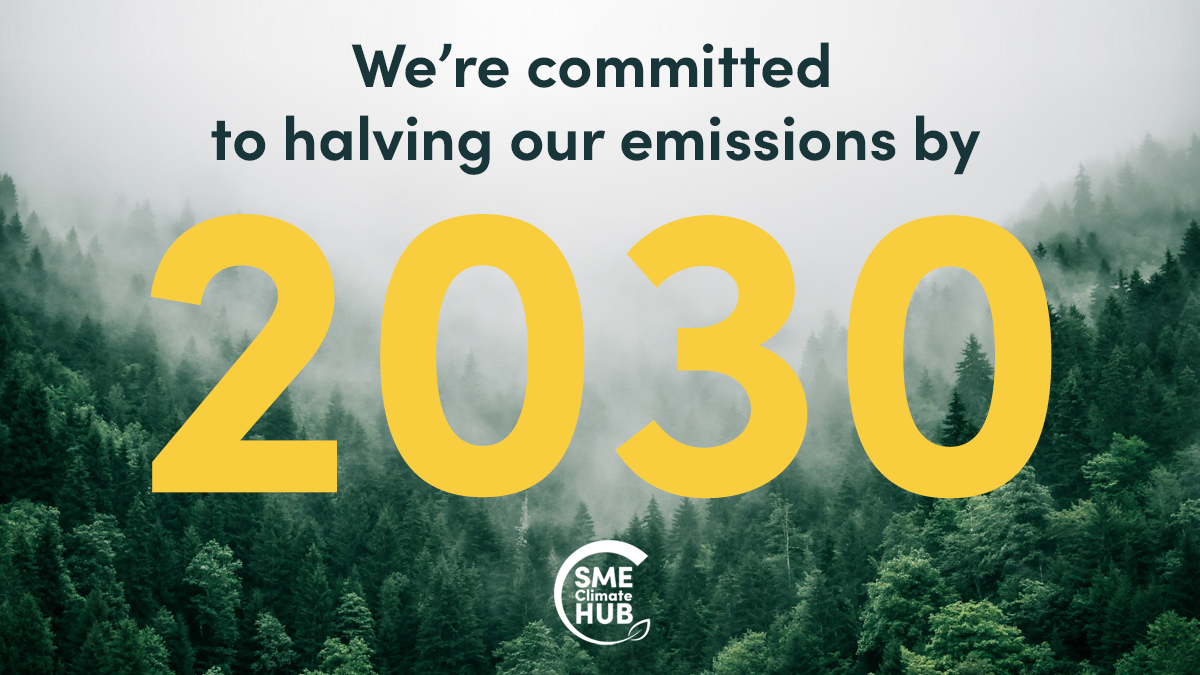It’s Earth Day, the day of the year where we are reminded of the challenge humanity is facing in regard to climate change. As an SME, it can be challenging to understand how we can make a difference but over the last 6 months, here at b&m, we have mapped out our journey to achieving net zero.
We started the journey by joining the SME Climate Hub last year. The SME Climate Hub is an initiative of the We Mean Business Coalition, the Exponential Roadmap Initiative, the United Nations Race to Zero campaign and the International Chamber of Commerce. As part of this membership, we have committed to halving greenhouse gas emissions before 2030 and achieve net zero before 2050. We have also committed to disclosing our progress annually.

We then achieved ISO14001 accreditation in late 2021. We now have a formalised management system that provides the framework and backbone for environmental processes and procedures. We are using this system to monitor and reduce our impact on the environment, commit to change and integrate new targets.
In order to establish the targets within our ISO14001 system, we had to understand our carbon emissions and where they were coming from in line with GHG Protocol. To do this, we took part in Normative’s beta Business Carbon Calculator program, gaining early access to a brand-new bespoke calculator that enables SME’s to generate, using in-house information, accurate data on their emissions and under which scope they fall, Scope 1, Scope 2 or Scope 3.
We have used the calculator to determine our carbon emissions, in metric tonnes of Co2 equivalence, for the year end 2021 and 2022.
- Year end 2021: 42.2 tonnes CO2e
- Year end 2022: 53.2 tonnes CO2e
There is a natural lift in the level of emissions in the 2021-2022 year due to the removal of lockdowns and returning to the office. Therefore, we feel this is a truer representation of our emissions, and this year’s data will be used as our baseline target to beat moving forward.
These numbers are captured in our Carbon Reduction Plan. The Carbon Reduction Plan features in the Government’s Action Note PPN 06/21. The PPN requires public sector bodies to request Carbon Reduction Plans, that feature baseline information and future targets, from potential suppliers. This is usually actioned where the anticipated contract value is over £5m, however, the authority may choose to request it for any value project. For example, we’ve been requested to provide it recently when applying for a public sector framework.
We are then using the data captured to understand where our targets should be focused on. This initial set of targets focus on the emissions which we can control, rather than those that we can’t have an impact on immediately or are in the supply chain. Although, it sits outside the GHG protocol, staff commuting, not business travel, is also on our agenda for reduction.
We have committed to achieving the following by late 2022:
- Reduction in energy consumption by 10%
- Reduce paper usage by 20%
- Change products (where feasible) to eco-friendly and carbon neutral alternatives
- Remove bottled water from the office
- Reduce staff business mileage by 10% (a year on year target)
We are looking to achieve these by undertaking a variety of initiatives including:
- Further embracing hybrid working
- Making full use of virtual/online technologies for avoid the need for unnecessary face to face meetings and printed products
- Installing measures in the office to reduce energy use such as timers for electric sockets to reduce items on standby
- Eco-friendly purchasing such as carbon neutral paper, fairtrade tea and coffee and environmentally friendly cleaning products.
- Encouraging shared and public business travel where possible.
Whilst we work to reduce our emissions to zero, we are now compensating for our carbon footprint through carbon offsetting with Ecologi. Ecologi help people and businesses become climate positive through using the offset payments to fund climate projects around the world, including reforestation, water projects and wind power projects.
It is vital to note that even though we are technically carbon neutral now thanks to offsetting, we truly believe that the only real way to mitigate impact is to remove the emissions in the first place and become net zero.
We look forward to sharing more of our journey with you as we go forward and begin to see the impact of our target initiatives. If you would like to understand more about our approach, please drop Steph an email.



